As the evening sky turns violet, the animals of the Pantanal gather near the water. Capybaras swim in tight formation, roseate spoonbills add smudges of pink to the riverbanks, the rumble of a jaguar pulsates from the forest.
This tropical wetland is the largest on Earth, stretching across Brazil, Paraguay and Bolivia, and playing host to some of the greatest gatherings of animals anywhere.
Now, scientists say the survival of the entire biome is at risk.
“The Pantanal is like Noah’s Ark. It is home to animals that are disappearing … a place where those at risk of extinction can survive,” says Pierre Girard, a professor at the Federal University of Mato Grosso.
“That could be about to change,” he says. “The Pantanal, as we know it, could soon cease to exist.”
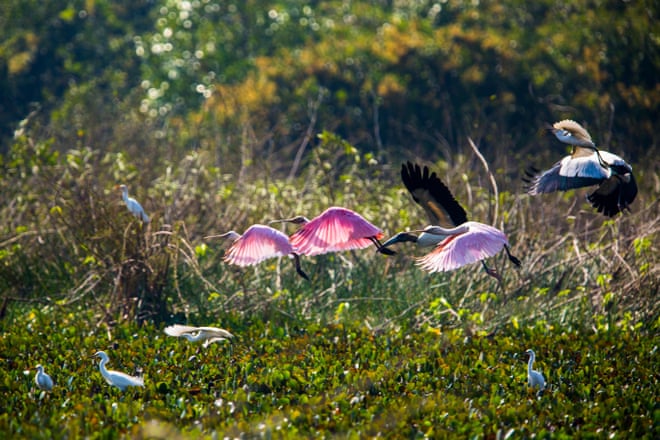
The 170,000 sq km (42m acre) wild expanse harbours one of the world’s most biologically rich environments, with at least 380 species of fish, 580 types of birds and 2,272 different plants. It is one of the main refuges for jaguars and houses a host of vulnerable and endangered species, including giant river otters, giant armadillos and hyacinth macaws.
It seems a high price to pay – destroying the Pantanal, a unique system, to reduce the price of grain
Prof Carolina J da Silva
But plans are under way to revive plans for the Paraguay River, one of the Pantanal’s main arteries, to be turned into an industrial shipping route for crops such as soya beans and sugar.
Political proponents say the waterway would reduce costs and time for exporting agricultural commodities to North America, Europe and Asia but critics warn that its creation – which involves building new ports, possibly straightening bends and meanders, and large-scale dredging – would cause irreversible damage to the wetland and its wildlife.
“It seems a high price to pay: destroying the Pantanal, one of the world’s unique systems, to reduce the price of grain,” says Carolina Joana da Silva, a professor at Mato Grosso State University. “It is a war – a war which risks extinction.”
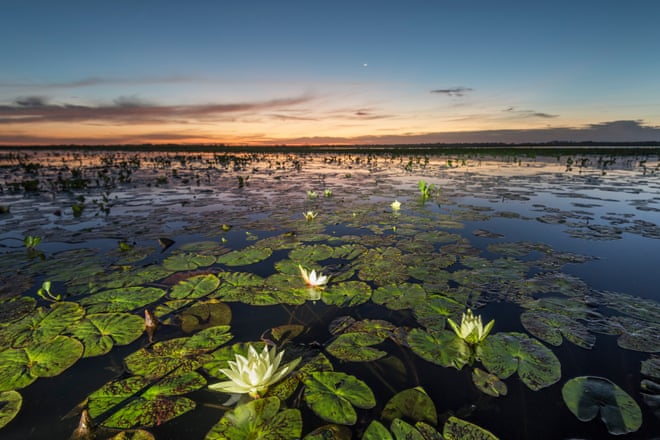
Inside a communal fishers’ work shed in Cáceres, 64-year-old Elza Basto Pereira, the head of the community, says construction materials began arriving along the river six months ago.
“Roads are being built for the planned ports, and materials are being lined up along the river; they keep coming,” she says.
The threat of the development, known as the Hidrovia Paraguay-Paraná waterway, has haunted the Pantanal for decades. Early iterations – which involved dredging and straightening river curves on hundreds of sites – were shelved by the Brazilian government in 2000 due to environmental concerns.
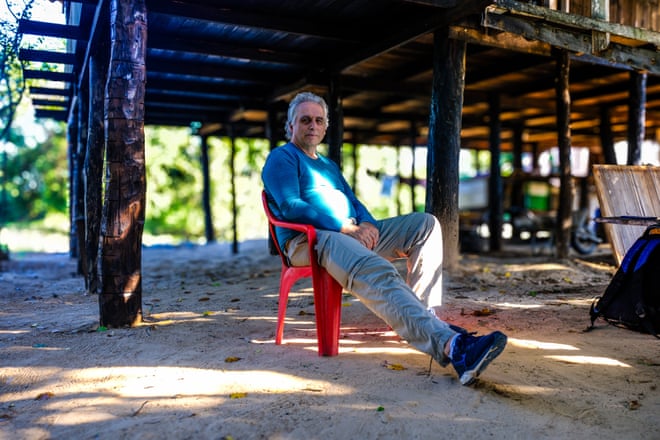
But the push to develop waterways through the wetland has continued. Now experts believe a new strategy is being deployed, one that sees sections of the project approved piece by piece.
“The politicians and companies are forcing it through dismembered,” says Girard.
Last year, the Brazilian government announced that the Paraguay River, which drains the wetland for six months then floods it for the rest of the year, would be developed under its growth acceleration programme. Its website says the national project has “great potential to reduce transportation costs” and that “discussions are being held with society and local stakeholders”.
The government announced an investment of 81m reais [£11m] for dredging, clearing vegetation and adapting the navigable channel’s signage. Preliminary licences were issued for the construction of two port facilities at Porto Esperança and Cáceres, which opponents say is the first step towards transforming the largest natural section of the Paraguay River into an engineered waterway.
Lourenço Pereira Leite, 54, sits with Basto Pereira at the Cáceres fishing shed. They are part of the ribeirinhos (riverside community), who live off sustainable fishing and small-scale farming.
“They try to deceive us,” Pereira Leite says. “When the waterway was first presented in the 90s, the supporters said it would bring prosperity – it did not. It started to destroy the environment instead.
“Now they come again, with the same words ‘progress, progress’, but we know it will mark the end of our fishing, our families.”
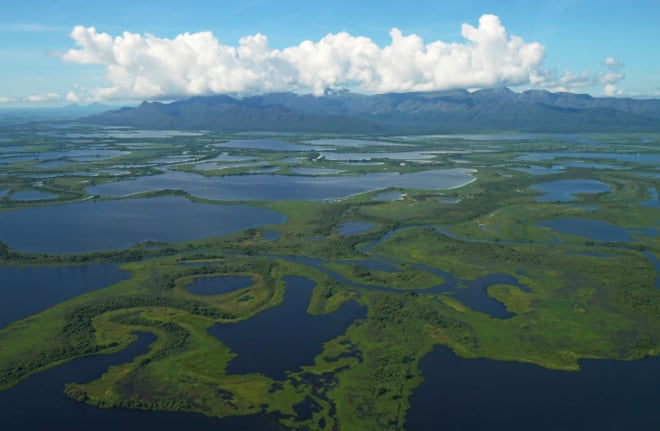
The Pantanal, often called the “kingdom of water”, is made up of more than 1,200 rivers and streams, and the vast biodiversity relies on the seasonal flood pattern. Scientists fear dredging and deepening will in effect create a “big drain”, disconnecting the Paraguay River from its floodplain and shrinking the wetland area.
Scientists warn this could destroy aquatic habitats, fish populations, bird nesting areas, and consequently affect other species all the way through the food chain.
Among those most at risk are the black skimmer, neotropic cormorant, Mato Grosso antbird and white-lored spinetail, according to Dr Angélica Vilas Boas da Frota, a local biologist, though larger mammals such as jaguars could also be affected by declining fish populations.
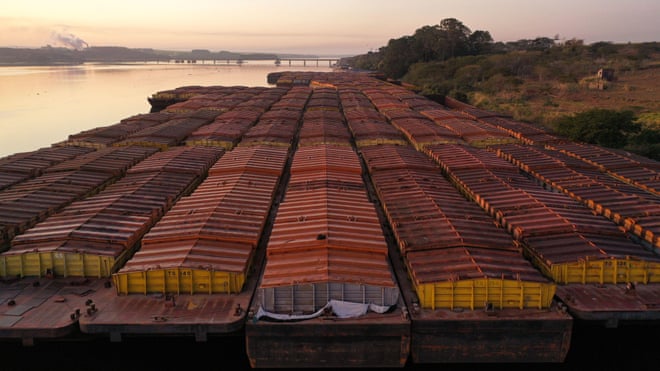
Wetlands are also of global importance for the climate. Despite covering only 5-8% of the Earth’s land surface, they could store up to 30% of terrestrial carbon. The Pantanal is a critical carbon sink, but perpetual dredging – which would be required for barges to pass, due to the sandy sediment along the riverbed – would lead to the release of greenhouse gases, further contributing to global warming.
The risk of wildfires could also increase, but such concerns are not being heard, scientists say. “Brazil sees the Amazon as its international environmental playing card,” says Girard, while the Pantanal remains forgotten.

Near Tucum, 55-year-old Edna Luiz Dias grills a freshly caught pacu fish. Her wooden stilted house is surrounded by trees and native plants. “I don’t need much money – only the fish, the birds, the fruits, the nature,” she says.
“But this waterway could take that all away. I can already feel the river changing.”
With its deeply curved rivers and thick marshes, this section of the Pantanal, close to Cáceres, remains sparsely populated by humans, but Porto Esperança already sees the effects of large barges on the river.
An existing port is now used to transport iron. The mineral leaves a thin layer of red dust on the fishing village’s land and trees. There are eight Indigenous communities living in the Pantanal, of which at least the reservation of the Guató people would be directly affected by making the river navigable, scientists say.
“The barges have already affected the environment, spreading iron over the water, our soil, our plants,” says Natalina Silva Oliveira Mendez, 50. “Adding the new port and creating the Hidrovia will be a disaster.”

Local businessmen, however, say the waterway – which they hope would facilitate year-round transportation – will bring economic development and wealth to the region. Adilson Reis is an engineer from Cáceres and works as a consultant on the project. He predicts it will be operational by 2026.
“As we develop, it is necessary to increase transport options. For years, the waterway has been paralysed,” the 75-year-old says. “I want the city of Cáceres, as a person who was born here, to grow. I think the waterway will bring prosperity.”
He agrees that the environment is a concern, but says certain conditions can be enforced – such as limiting the size of barges – to mitigate the risk.
In response to this article, the Brazilian ministry for ports and airports said the concerns raised about environmental damage were “opinions” without “scientific elements to support them”, and that a debate for each project would be held. The ministry of environment and climate change did not respond to requests for comment.
Among the ribeirinhos, the consensus is that the Hidrovia will indeed go ahead, but they are not ready to give up their centuries-old way of life.
“Society does not want to hear us because then they can create whatever they want – dams, waterways, ports,” says Luiz Dias.
“But I want the world to know that we are here – and that I will stay and fight for my life and for the Pantanal.”
This article by Harriet Barber was first published by The Guardian on 12 August 2024. Lead Image: A female jaguar prowls along a riverbank. Photograph: Paul Goldstein/SWNS.
What you can do
Help to save wildlife by donating as little as $1 – It only takes a minute.
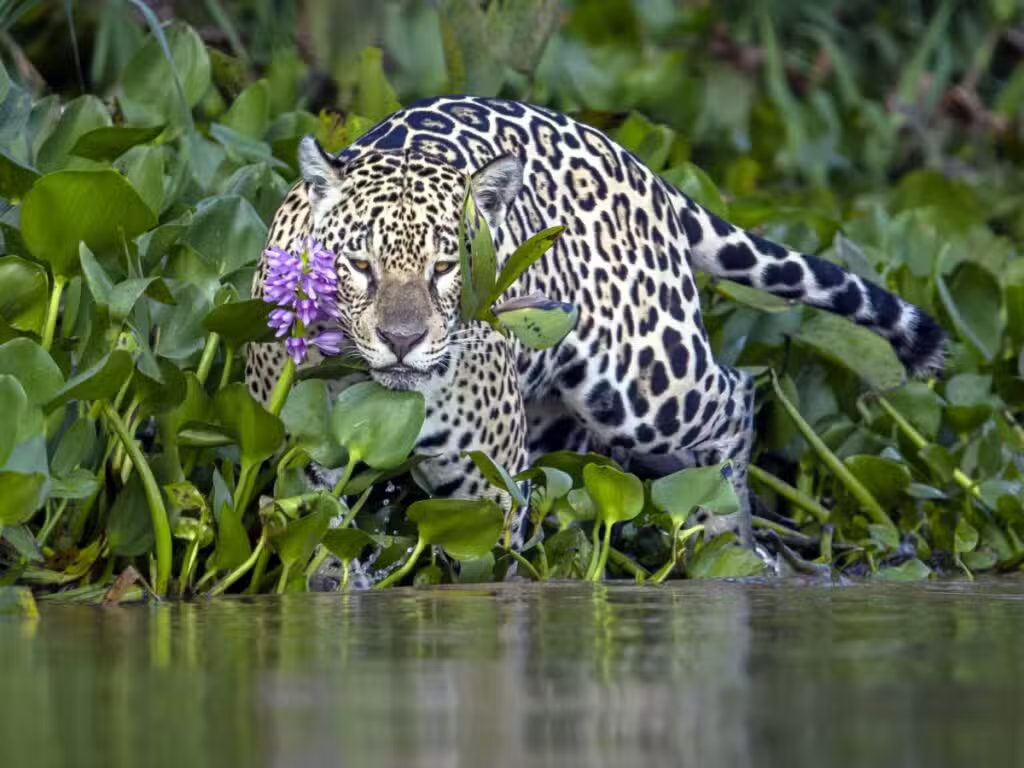
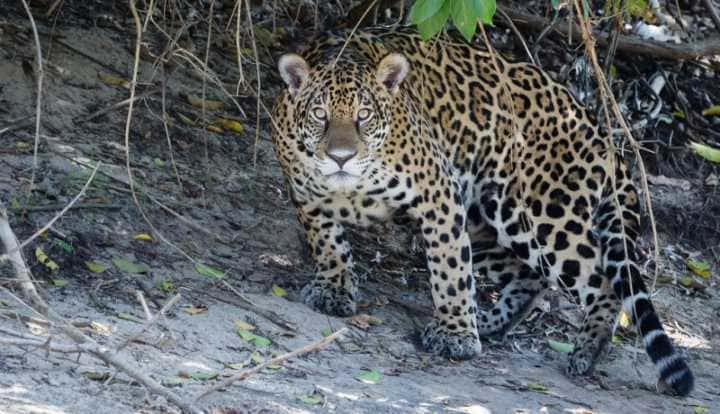
Leave a Reply